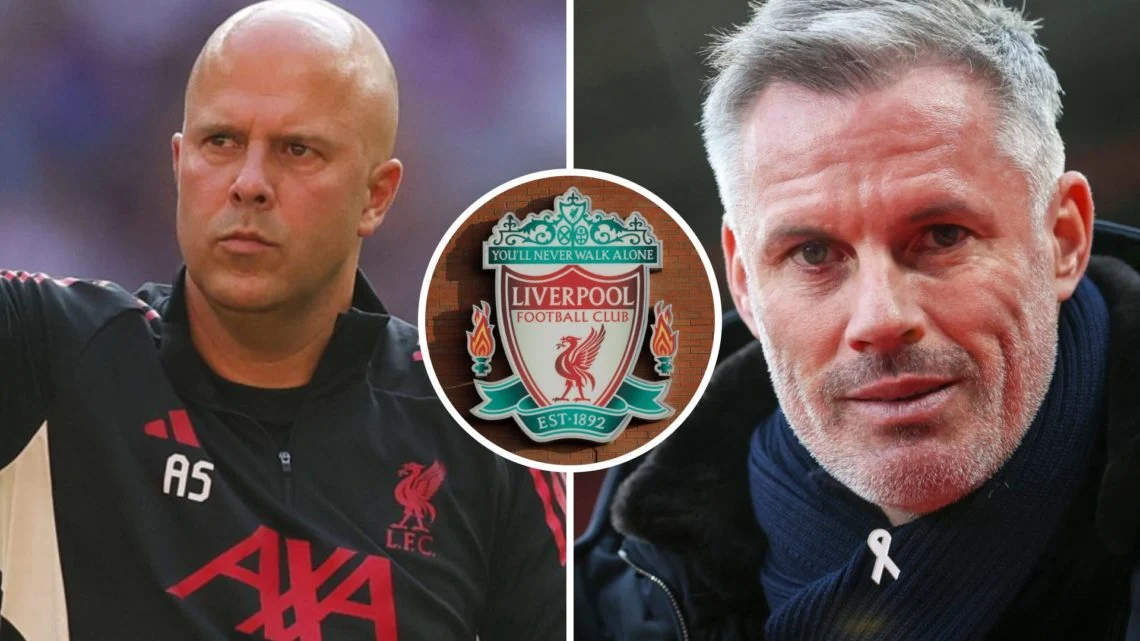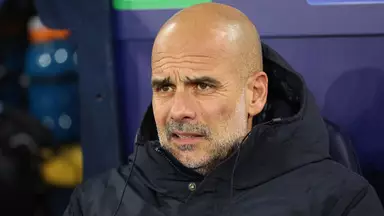Liverpool’s Defensive Vulnerabilities Under Arne Slot: A Deep Analysis

7The 2025 FA Community Shield encounter between Liverpool and Crystal Palace at Wembley Stadium served as more than just a traditional season curtain-raiser. It provided a stark illustration of the tactical challenges facing new Liverpool manager Arne Slot and highlighted persistent defensive frailties that could define the Reds’ campaign ahead. What should have been a routine victory for Jürgen Klopp’s successors instead became a cautionary tale about the delicate balance between attacking ambition and defensive solidity.
Crystal Palace’s triumph in the Community Shield represented their first piece of silverware under Oliver Glasner’s management, but perhaps more significantly, it exposed fundamental issues within Liverpool’s defensive structure that had been evident throughout their pre-season preparations. The Eagles’ ability to overturn two separate deficits demonstrated not just their resilience, but Liverpool’s alarming tendency to gift opportunities to opponents through tactical naivety.
The match unfolded as a microcosm of Liverpool’s pre-season struggles. Despite taking the lead on multiple occasions, the Reds found themselves consistently vulnerable to counter-attacks and quick transitions. Palace’s clinical finishing masked what was essentially a systematic breakdown in Liverpool’s defensive organization, with key players failing to execute Slot’s tactical blueprint effectively.
Liverpool’s approach under their new Dutch manager has emphasized high-intensity pressing and aggressive man-to-man marking throughout the opponent’s half. While this philosophy has generated impressive attacking displays and goal-scoring opportunities, it has simultaneously created significant gaps in defensive coverage that opponents have been quick to exploit
Former Liverpool defender Jamie Carragher, now a prominent pundit and keen observer of his former club’s fortunes, has been increasingly vocal about his concerns regarding the team’s defensive approach under Slot. His analysis of the Community Shield performance revealed deep-seated tactical issues that extend beyond individual errors to systemic problems with the team’s overall defensive structure.
Carragher’s primary concern centers on Liverpool’s aggressive pressing system, which requires players to commit fully to winning the ball high up the pitch. While this approach can be devastatingly effective when executed perfectly, it leaves the team exposed when players are bypassed or when the press is broken. The former England international has observed that Liverpool’s defensive problems are not merely a result of individual mistakes, but rather a consequence of tactical instructions that prioritize aggressive engagement over defensive security.
The pundit’s frustration became particularly evident when analyzing Palace’s opening goal, where Liverpool’s high defensive line and aggressive pressing left significant space for Ismaila Sarr to exploit. Carragher noted how Milos Kerkez was drawn inside by Liverpool’s pressing structure, leaving Cody Gakpo isolated and unable to track Sarr’s run effectively. This tactical breakdown exemplified the systemic issues that have plagued Liverpool throughout their pre-season campaign.
Carragher’s concerns extend beyond tactical analysis to genuine worry about Liverpool’s prospects for the upcoming season. His admission that the team’s defensive vulnerabilities make him “nervous” reflects broader concerns within the Liverpool fanbase and football community about whether Slot’s tactical approach can be sustained over a full Premier League campaign without significant defensive reinforcement
Arne Slot’s tactical philosophy represents a continuation of Liverpool’s traditionally aggressive approach, but with subtle differences that have created new vulnerabilities. The Dutch manager’s emphasis on winning the ball as high up the pitch as possible requires perfect coordination and timing from all eleven players. When this system functions optimally, it creates overwhelming pressure on opponents and generates numerous scoring opportunities.
However, the flip side of this aggressive approach is that when the press is bypassed or when individual players fail to execute their roles perfectly, the consequences can be catastrophic. Liverpool’s defensive line is often left exposed, with center-backs like Virgil van Dijk required to cover vast amounts of space and make split-second decisions about when to step up and when to hold their position.
The Community Shield performance highlighted how this tactical approach can lead to what Carragher described as “high-scoring games” throughout the season. While Liverpool’s attacking output under this system has been impressive, their defensive statistics tell a more concerning story. The team has conceded goals at an alarming rate during pre-season, with many of these goals following a similar pattern of aggressive pressing being bypassed and defenders being caught out of position.
This tactical approach also places enormous pressure on individual defenders to make perfect decisions consistently. Van Dijk, typically one of the most reliable defenders in world football, has found himself making uncharacteristic errors as he attempts to adapt to Slot’s more aggressive defensive requirements. The penalty concession and subsequent defensive lapse that led to Palace’s equalizer demonstrated how even world-class players can struggle with the demands of this high-risk system
Virgil van Dijk’s performance in the Community Shield represented perhaps the most concerning aspect of Liverpool’s defensive display. The Dutch captain, widely regarded as one of the finest center-backs of his generation, produced two significant errors that directly contributed to Crystal Palace’s victory. For a player of his caliber and experience, such lapses in concentration and judgment are virtually unprecedented.
The penalty incident that led to Palace’s opening goal showcased a rare moment of poor decision-making from van Dijk. His challenge on Palace’s forward was unnecessary and clumsy, lacking the composure and timing that have defined his performances throughout his Liverpool career. This error appeared to unsettle the defender, affecting his confidence and decision-making for the remainder of the match.
Even more concerning was van Dijk’s role in Palace’s equalizing goal. His attempt to play an offside trap in the 77th minute demonstrated poor communication with his defensive colleagues and inadequate awareness of the attacking threat posed by Sarr. The veteran defender’s decision to step up and leave space behind him was exactly the type of error that Carragher had been warning about throughout Liverpool’s pre-season campaign.
Van Dijk’s struggles cannot be viewed in isolation from the broader tactical system in which he is operating. Slot’s aggressive pressing approach requires the center-backs to make numerous high-pressure decisions throughout a match, often with limited time to assess the situation fully. While van Dijk has historically excelled in such scenarios, the increased frequency and intensity of these decisions under Slot’s system appear to be taking their toll.
The 34-year-old’s performance also raises questions about how effectively Liverpool’s experienced players can adapt to new tactical demands. Van Dijk has spent several seasons perfecting his understanding of Liverpool’s defensive system under Klopp, and the adjustment to Slot’s modified approach may require more time and patience than initially anticipated
Liverpool’s defensive problems under Slot extend far beyond individual errors to encompass broader systemic issues that affect the entire team’s defensive structure. The aggressive pressing system requires perfect coordination between all players, and when this coordination breaks down, the consequences are often severe.
One of the most significant issues is the lack of defensive cover when the initial press is bypassed. Liverpool’s midfielders are instructed to support the pressing action aggressively, which often leaves significant gaps between the midfield and defensive lines. Opponents who can play through or around Liverpool’s initial pressure frequently find themselves with numerical advantages in dangerous areas.
The positioning of Liverpool’s full-backs also creates defensive vulnerabilities. Slot’s system requires the full-backs to provide width in attack while also supporting the aggressive pressing structure. This dual responsibility often leaves them caught between defensive and attacking duties, unable to fulfill either role effectively. The Community Shield performance highlighted how this tactical confusion can lead to opponents finding space in wide areas to create dangerous attacking opportunities.
Liverpool’s defensive transitions have also been problematic under Slot’s system. When the team loses possession high up the pitch, the aggressive positioning of multiple players means that opponents often have clear pathways to attack. The team’s inability to quickly reorganize defensively after losing the ball has led to numerous high-quality chances for opponents throughout the pre-season period.
The communication between defensive players has also appeared disjointed under the new system. Van Dijk’s offside trap attempt against Palace demonstrated poor coordination with his defensive colleagues, while similar instances of miscommunication have been evident throughout Liverpool’s pre-season matches
As Liverpool prepares for the new Premier League season, Slot faces the challenging task of maintaining his team’s attacking potency while addressing their defensive vulnerabilities. The manager’s tactical philosophy has clear merits, as evidenced by Liverpool’s impressive attacking displays, but the defensive concerns highlighted by Carragher and demonstrated in the Community Shield cannot be ignored.
One potential solution involves refining the pressing triggers and providing clearer instructions about when to engage aggressively and when to maintain defensive shape. This tactical adjustment would require extensive training ground work and may initially impact Liverpool’s attacking effectiveness as players adapt to more conservative pressing scenarios.
Slot may also need to consider personnel changes to better suit his tactical approach. The current defensive setup may not be optimally configured for the demands of his system, and strategic additions or positional changes could help address some of the existing vulnerabilities.
The integration of defensive midfielders into the pressing structure represents another area for potential improvement. By providing additional defensive cover when the initial press is bypassed, Liverpool could maintain their aggressive approach while reducing the risk of being caught out defensively.
The defensive issues displayed in the Community Shield have significant implications for Liverpool’s prospects in the upcoming season. Carragher’s concern about the team being involved in “high-scoring games” reflects a broader worry about whether Liverpool can maintain their aggressive approach over a full campaign without suffering defensively.
The Premier League’s demanding schedule means that tactical systems must be sustainable over multiple competitions and extended periods. Liverpool’s current approach, while potentially effective in individual matches, may prove too physically and mentally demanding over an entire season.
Opposition managers will also have taken note of Liverpool’s defensive vulnerabilities and will likely develop specific tactical approaches to exploit these weaknesses. The patterns identified by Carragher and demonstrated against Palace provide a clear blueprint for how to create chances against Slot’s Liverpool.
The psychological impact of defensive errors on the team’s confidence cannot be underestimated. Players like van Dijk, who have built their reputations on defensive reliability, may find their confidence affected by repeated errors under the new system. This psychological dimension could have far-reaching consequences for the team’s overall performance.
Liverpool’s immediate priority must be to address the defensive issues highlighted in the Community Shield while preserving the positive aspects of Slot’s tactical approach. This process will likely require patience from fans and stakeholders as the team works to find the optimal balance between attacking ambition and defensive solidity.
The pre-season period has provided valuable lessons about the limitations of the current tactical approach, and Slot must use this information to refine his system before the competitive season begins in earnest. The manager’s willingness to adapt and evolve his tactics will likely determine Liverpool’s success in the months ahead.
Training ground adjustments, personnel changes, and tactical modifications will all play crucial roles in addressing the identified weaknesses. The key challenge for Slot will be implementing these changes without compromising the attacking effectiveness that has been a hallmark of his early tenure
The 2025 FA Community Shield defeat to Crystal Palace represents more than just a disappointing result for Liverpool. It has exposed fundamental tactical issues that could define the team’s season and highlighted the challenges facing Arne Slot as he attempts to implement his vision at Anfield.
Jamie Carragher’s concerns about Liverpool’s defensive approach reflect broader questions about the sustainability and effectiveness of Slot’s tactical philosophy. While the attacking benefits of aggressive pressing are clear, the defensive vulnerabilities it creates cannot be ignored, particularly given the high-stakes nature of Premier League competition.
The performance of players like Virgil van Dijk demonstrates how even world-class individuals can struggle to adapt to new tactical demands. The systematic nature of Liverpool’s defensive problems suggests that solutions will require comprehensive tactical adjustments rather than simply improved individual performances.
As Liverpool prepares for the new season, the lessons learned from the Community Shield must inform Slot’s tactical preparations. The manager’s ability to address the identified weaknesses while maintaining his team’s attacking potency will likely determine whether his first season at Anfield is remembered as a success or a cautionary tale about the importance of defensive stability in modern football.
The coming weeks and months will reveal whether Slot can find the tactical balance necessary for sustained success, or whether Carragher’s nervousness about high-scoring games and defensive vulnerabilities will prove prophetic. For Liverpool fans, the hope is that their new manager can learn from these early setbacks and develop a system that combines the best of both attacking ambition and defensive reliability.














